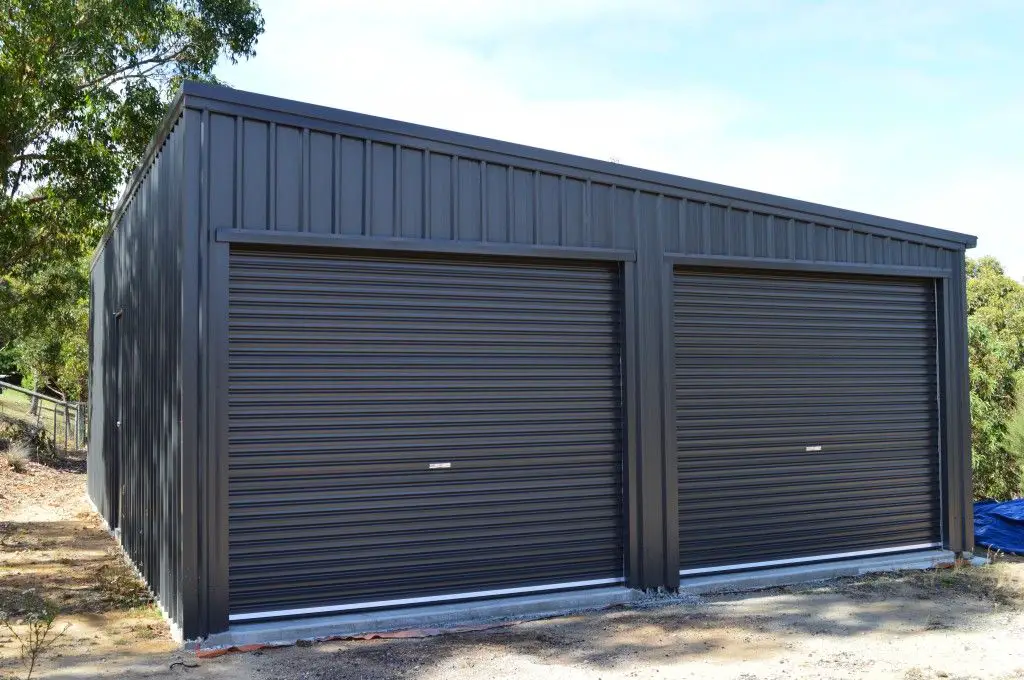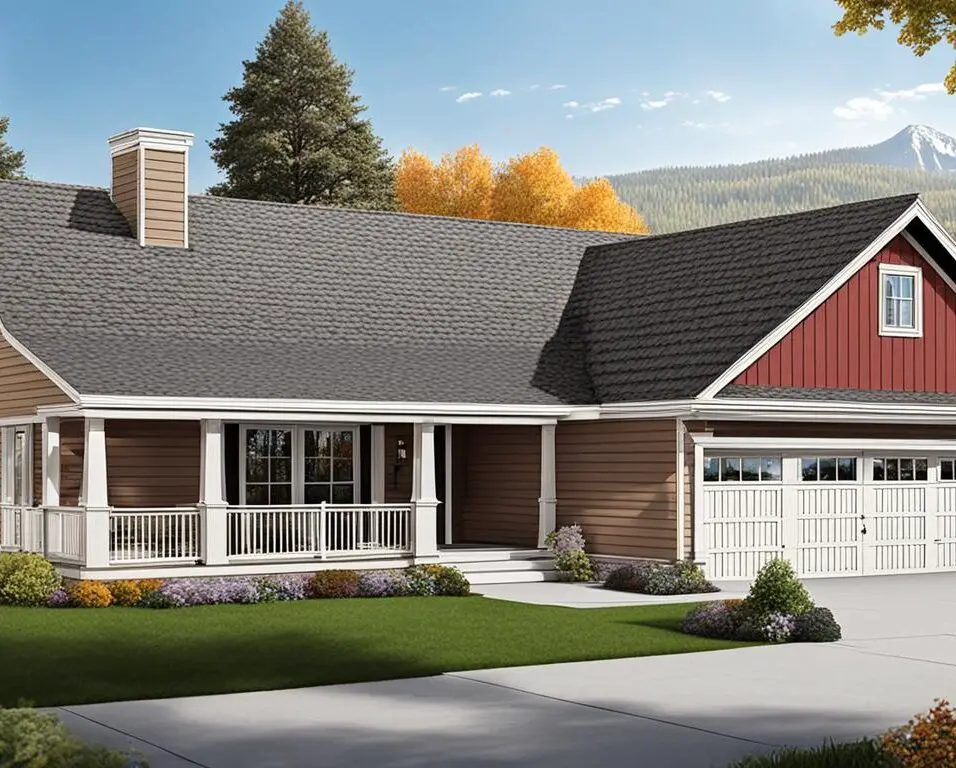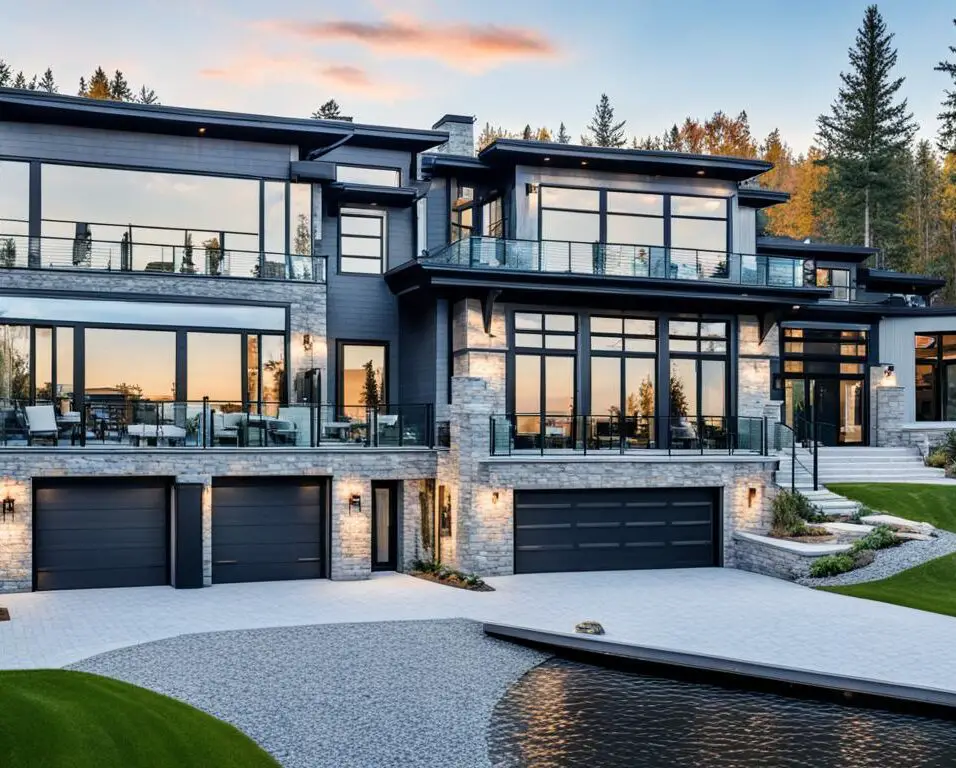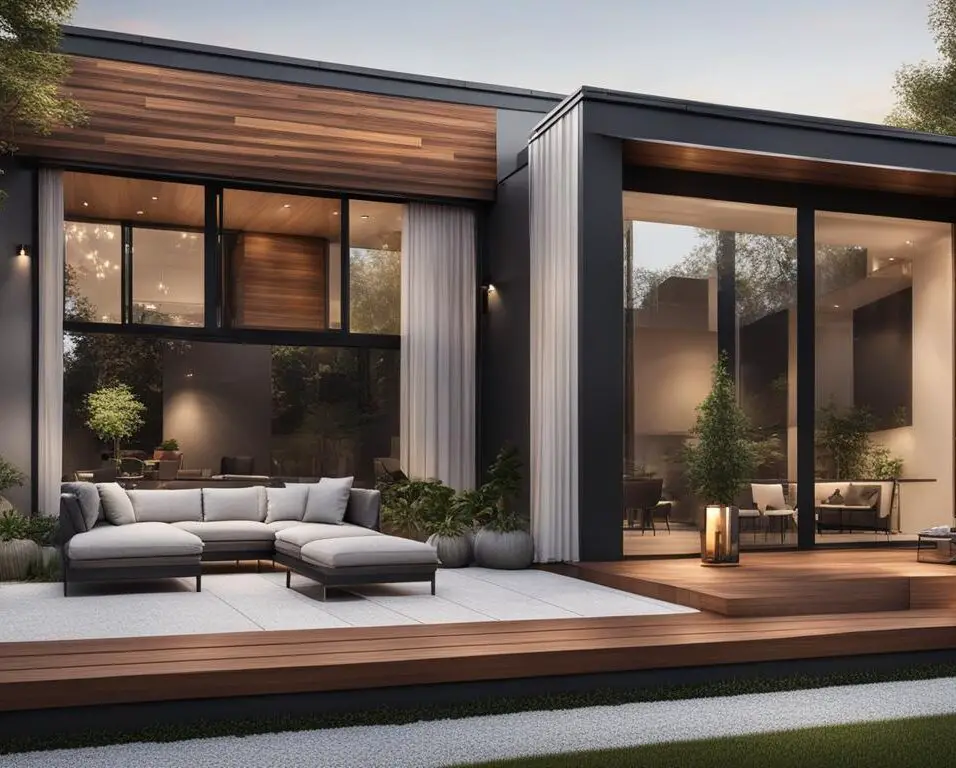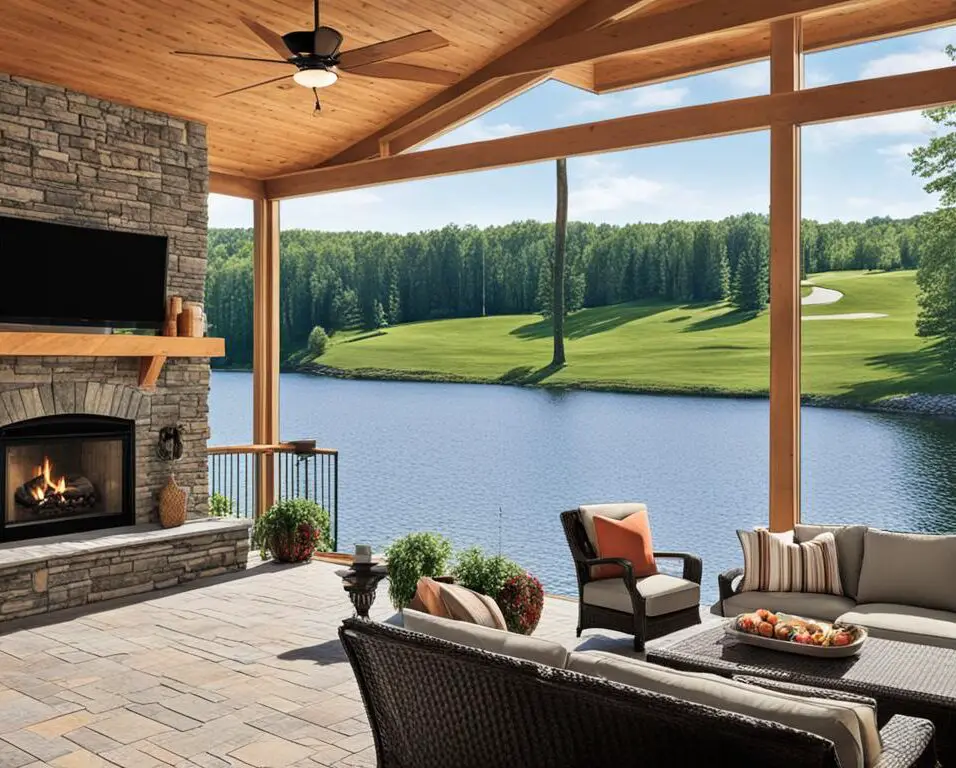How To Install A Metal Roof On A Shed
Introduction
How To Install A Metal Roof On A Shed: Before diving into the installation process, it is essential to understand the advantages of opting for a metal roof. Metal roofs are highly durable and can withstand harsh weather conditions such as heavy rain, snow, and strong winds. They are also fire-resistant, making them a safer option for your shed. Additionally, metal roofs are lightweight, which reduces the stress on the shed’s structure and allows for easier installation.
Before you begin the installation process, it is crucial to gather all the required tools and materials. As for the materials, you will need metal roofing panels, roofing screws, ridge caps, closure strips, and a roof underlayment.
Prior to installing the metal roof, it is necessary to prepare the shed properly. Start by removing any existing roofing materials and inspecting the shed’s roof for any damage or rot. Repair any issues and ensure that the roof surface is clean and free from debris. Taking the time to prepare the shed adequately will ensure a smooth and successful installation process.
By following these instructions, you will be well on your way to installing a durable and long-lasting metal roof on your shed. Remember to take your time, follow safety precautions, and seek professional assistance if needed. With the right tools, materials, and techniques, your shed will be equipped with a reliable metal roof that will withstand the test of time.
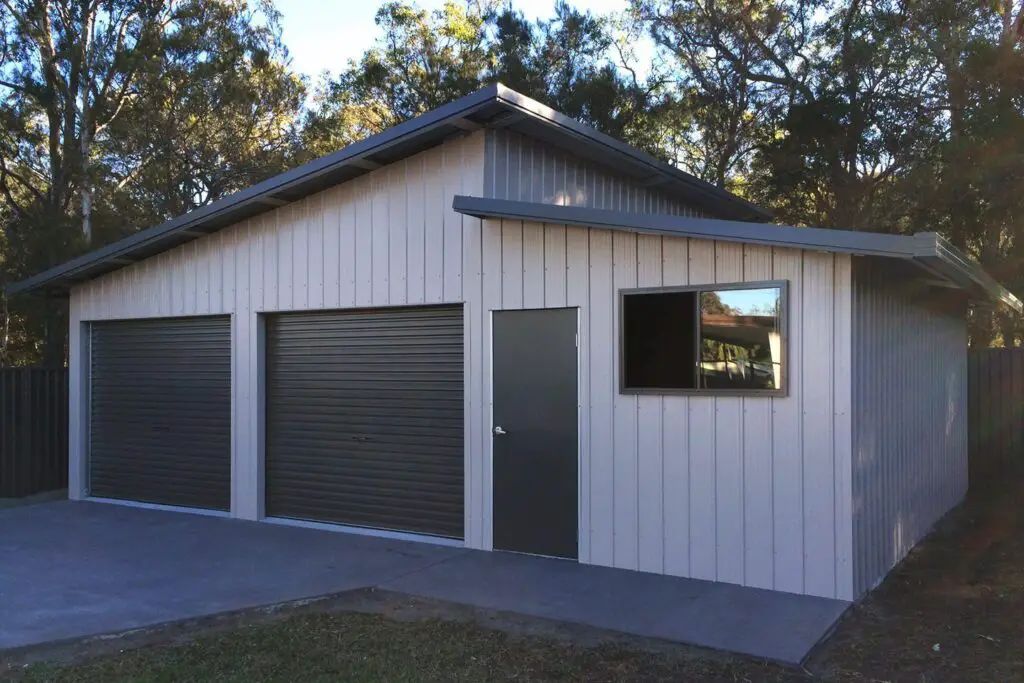
What do you put under a metal shed roof?
The best underlayment for a shed metal roof is waterproof self-adhering membrane. Once you apply it, you can rest easy. This membrane is like having two roofs on top of each other – it is durable, waterproof, serves as an air barrier and holds up well in extremely hot and cold climates.
When it comes to constructing a metal shed, one important consideration is what to put under the roof. The material you choose for the underlayment can have a significant impact on the shed’s durability, insulation, and overall performance. It is crucial to select a suitable option that provides adequate protection against moisture, heat, and other environmental factors. In this article, we will explore various options for what to put under a metal shed roof and discuss their benefits and drawbacks.
Option 1: Plywood or OSB Sheathing
One popular choice for underlayment is plywood or oriented strand board (OSB) sheathing. These materials offer a solid and stable base for the metal roof. Plywood is made from thin layers of wood veneer glued together, while OSB consists of compressed wood strands. Both options provide excellent strength and can withstand heavy loads. Additionally, they offer good insulation properties, helping to regulate the shed’s temperature. However, it is essential to ensure proper installation and sealing to prevent water infiltration and potential damage to the wood over time.
Option 2: Synthetic Underlayment
Another option to consider is synthetic underlayment, such as synthetic felt or synthetic roofing underlayment. These materials are designed specifically for roofing applications and offer excellent protection against moisture and UV rays. Synthetic underlayment is lightweight, easy to install, and provides a high level of durability. It also offers enhanced resistance to tearing and wrinkling, ensuring a long-lasting solution for your metal shed roof. However, it is important to follow the manufacturer’s guidelines for installation to ensure optimal performance.
Option 3: Insulation Panels
If you plan to use your metal shed for various purposes, including as a workshop or storage space, insulation panels can be a valuable addition. These panels not only provide a solid base for the metal roof but also offer insulation properties, helping to regulate the shed’s temperature. Insulation panels are typically made from foam or other insulating materials and can significantly improve energy efficiency. However, they may require additional installation steps and careful consideration of the shed’s ventilation to prevent condensation buildup.
Option 4: Metal Roofing Underlayment
For optimal protection against moisture and leaks, you can consider using metal roofing underlayment specifically designed for metal roofs. These underlayments are typically made from rubberized asphalt or synthetic materials and provide an extra layer of waterproofing. Metal roofing underlayment helps to prevent water infiltration and can also enhance the shed’s insulation properties. It is crucial to choose a high-quality underlayment that is compatible with your metal roof and follow the manufacturer’s instructions for installation.
Selecting the right underlayment for your metal shed roof is essential for its long-term performance and durability. Whether you choose plywood, synthetic underlayment, insulation panels, or metal roofing underlayment, each option has its advantages and considerations. It is crucial to assess your specific needs, budget, and climate conditions before making a decision. Additionally, proper installation and maintenance are key to ensuring the underlayment’s effectiveness. By carefully considering these factors, you can ensure that your metal shed roof remains protected and functional for years to come.
What are the steps to installing a metal roof?
Step by Step Metal Roof Installation Process
- Removal of the Old Shingles and Deck Repair. You may have two options here.
- Waterproofing Layer.
- The Construction of a Wooden Strapping.
- Perimeter Flashing.
- Installing Valleys.
- Installation of Metal Sheets.
- Fixing Metal Sheets.
- Installation of Ridge Elements.
Installing a metal roof can be a great investment for your home. Not only does it provide durability and longevity, but it also adds a sleek and modern look to your property. However, the installation process can be quite complex and requires careful planning and execution. In this article, we will outline the steps involved in installing a metal roof to help you understand the process better.
The first step in installing a metal roof is to measure the roof area accurately.
This will help you determine the amount of material you will need for the project. It is essential to measure both the length and width of the roof, taking into account any overhangs or protrusions. Once you have the measurements, you can calculate the square footage of the roof and determine the quantity of metal panels required.
Next, you need to prepare the roof surface for installation. This involves removing any existing roofing materials, such as shingles or tiles, and ensuring that the roof deck is clean and free from debris. It is crucial to inspect the roof for any damage or rot and make necessary repairs before proceeding with the installation.
After preparing the roof surface, the next step is to install the underlayment. The underlayment acts as a moisture barrier and provides additional protection against leaks. It is typically made of synthetic materials and is laid over the roof deck before the metal panels are installed. The underlayment should be secured properly to prevent any movement or damage during the installation process.
Once the underlayment is in place, you can start installing the metal panels.
It is essential to follow the manufacturer’s instructions carefully to ensure proper installation. Typically, the panels are secured to the roof deck using screws or clips. It is crucial to space the panels correctly and ensure that they are aligned properly to create a watertight seal. Additionally, you may need to cut the panels to fit around any roof vents or other protrusions.
Finally, after all the panels are installed, you need to finish the roof edges and ridge. This involves installing metal flashing and trim to provide a clean and finished look. The flashing helps to redirect water away from vulnerable areas, such as valleys or chimneys, while the trim adds aesthetic appeal to the roof. It is important to secure the flashing and trim properly to prevent any water infiltration or damage.
Installing a metal roof requires careful planning and execution. By following the steps outlined above, you can ensure a successful installation that will provide durability, longevity, and a modern look to your home.
Can you install metal roof yourself?
Firstly, it is crucial to assess your own skills and experience in roofing. While installing a metal roof may seem straightforward, it requires a certain level of expertise to ensure a proper installation. If you have never worked on a roofing project before, it may be wise to consult with a professional or consider hiring a roofing contractor.
Secondly, you need to have the necessary tools and equipment. Installing a metal roof requires specific tools such as a drill, metal snips, a ladder, and safety equipment. It is essential to have these tools readily available before starting the installation process.
Thirdly, you should carefully consider the size and complexity of the project. Installing a metal roof on a small shed or garage may be more manageable for a DIY project. However, if you are planning to install a metal roof on a larger structure or a complex roof design, it may be more challenging and time-consuming.
Additionally, it is important to research and understand the local building codes and regulations. Some areas may require permits or inspections for roof installations, and it is crucial to comply with these regulations to avoid any legal issues.
Do I need to put plywood under a metal roof?
Is plywood required beneath a metal roof? Underlayment is not required as long as the interior of your roof is protected from moisture collection; however, homeowners who want to insulate their home substantially may choose to install plywood to protect their investment.
When it comes to installing a metal roof, one common question that homeowners often ask is whether or not they need to put plywood under the metal panels. The answer to this question depends on several factors, including the type of metal roof being installed, the condition of the existing roof, and the local building codes. In this article, we will explore the reasons why plywood is often recommended under a metal roof and when it may not be necessary.
Plywood is typically used as a base or substrate for a metal roof for several reasons. Firstly, it provides a smooth and even surface for the metal panels to be installed on. This helps to prevent any imperfections or irregularities in the underlying roof structure from being visible on the finished roof. Additionally, plywood adds structural strength to the roof, helping to distribute the weight of the metal panels evenly and reducing the risk of sagging or buckling over time.
Plywood also acts as a secondary layer of protection against moisture.
While metal roofs are generally highly resistant to water infiltration, there is still a possibility of water getting through the seams or fastener holes. Plywood acts as a barrier, preventing any water that does make its way through the metal panels from reaching the underlying roof structure and causing damage.
In some cases, plywood may not be required under a metal roof. For instance, if you are installing a metal roof over an existing asphalt shingle roof that is in good condition, the shingles can act as a suitable base for the metal panels. However, it is important to note that the existing roof must be in good condition, with no signs of rot, decay, or structural issues. Additionally, local building codes may dictate whether or not plywood is required, so it is essential to check with your local authorities before proceeding with the installation.
While plywood is commonly recommended under a metal roof, it may not always be necessary. Plywood provides a smooth surface, adds structural strength, and acts as a secondary moisture barrier. However, if you are installing a metal roof over an existing roof in good condition, plywood may not be required. Always consult with a professional roofing contractor and check local building codes to determine the best course of action for your specific situation.
What is the best material to put under a metal roof?
Felt Underlayment (Asphalt Felt or Tar Paper)
It’s known by many names, including felt paper, tar paper, and asphalt-soaked felt. But no matter what you call it, felt underlayment is the most common underlayment material used for steeper-sloped metal roofs.
When it comes to installing a metal roof, choosing the right material to put underneath is crucial for ensuring its longevity and performance. The material that goes under the metal roof serves multiple purposes, including providing insulation, preventing moisture buildup, and enhancing the roof’s overall durability. With various options available, it is essential to consider factors such as climate, budget, and specific requirements to determine the best material for your metal roof.
Insulation:
One of the primary functions of the material placed under a metal roof is insulation. Insulation helps regulate the temperature inside the building, keeping it comfortable and energy-efficient. One popular choice for insulation is rigid foam boards. These boards are lightweight, easy to install, and offer excellent thermal resistance. They can effectively prevent heat transfer, keeping the interior cool in hot climates and warm in colder regions.
Moisture Barrier:
Another crucial aspect to consider when selecting the material for under a metal roof is its ability to act as a moisture barrier. Moisture buildup can lead to various issues, including mold growth, rotting, and structural damage. Therefore, it is essential to choose a material that effectively prevents moisture from seeping into the roof. One commonly used material for this purpose is synthetic underlayment. This type of underlayment is water-resistant, lightweight, and durable. It provides an additional layer of protection against water infiltration, ensuring the longevity of the metal roof.
Durability:
The material placed under a metal roof should also contribute to its overall durability. It should be able to withstand the weight of the metal panels and any external forces such as wind or hail. One durable option is high-density polyethylene (HDPE) underlayment. HDPE underlayment is tear-resistant, UV-stable, and can withstand extreme weather conditions. It acts as a protective layer, preventing any damage to the metal roof and enhancing its lifespan.
Cost-effectiveness:
The things put under a metal roof should not cost too much. High-quality options that balance performance and cost-effectiveness are the best way to go. Cheap underlayment is made of synthetic felt. Natural felt costs more than synthetic felt, but synthetic felt is cheaper and waterproof. People who want high-quality padding at a good price will like it.
A metal roof can provide protection, protect against water damage, last a long time, and be affordable. Rigid foam boards, synthetic, HDPE, and synthetic felt are all popular types of flooring.
Certain tools and materials are needed to build a metal shed roof. You must have safety glasses, gloves, and a strong ladder. They keep the operation safe.
To measure the shed’s top, you’ll need a tape measure
Cutting metal roof panels is done with a circle saw or shears. For screw or nail holes, you need a drill with a metal bit. A screw gun or hammer is used to put up metal roof panels.
We need metal covering panels. You pick the color and style. Don’t forget to use roofing insulation to keep water out. Ridge caps and flashing keep water and air out of the edges and joints of the roof.
For a shed metal roof installation to go well and last a long time, you need certain tools and supplies. First, safety: put on gloves and glasses. To get to the shed top, you’ll need a strong ladder.
Tape measures are an important tool for building a shed roof. This figures out how many metal roofing panels you need. Painting roof lines on makes sure that the work is straight. Cutting metal roof panels is done with a circle saw or shears. These tools make perfect cuts that don’t damage the wall.
After getting tools, stock up. Metal shed roof pieces come in a lot of different colors and styles to fit your shed. Roofing membrane is needed to keep moisture out. There are metal plates on top of the roof that keep water out. Closure is held in place with neoprene bolts and metal roofing screws or nails. Ridge caps and flashing keep edges and joints from leaking and let air flow through roofs.
What are the step-by-step instructions for preparing the shed’s roof for metal installation?
Preparing the shed’s roof for metal installation is a crucial step to ensure a successful and long-lasting metal roof. Here is a step-by-step guide to help you through the process:
Clear the roof: Start by removing any existing roofing materials, such as shingles or tiles, from the shed’s roof. Use a pry bar or a roofing shovel to carefully lift and remove the old roofing materials. Make sure to dispose of them properly.
Inspect the roof: Once the roof is cleared, thoroughly inspect it for any signs of damage or decay. Look for rotting wood, water damage, or any structural issues. It is essential to address these problems before installing the metal roof to ensure a solid foundation.
Repair and reinforce: If you come across any damaged or weak areas during the inspection, it is crucial to repair and reinforce them. Replace any rotten or damaged wood and reinforce the roof’s structure if necessary. This step is vital to provide a stable and secure base for the metal roofing panels.
Install underlayment: Before installing the metal roofing panels
It is recommended to add an underlayment layer. This layer acts as a moisture barrier and provides additional insulation.
Measure and mark: Use a tape measure and mark the measurements on the panels, ensuring precise cuts and a proper fit.
Cut the panels: Take your time and make clean, straight cuts to ensure a professional-looking installation.
Install the panels: Finally, it’s time to install the metal roofing panels onto the shed’s roof. Start at one corner and work your way across, overlapping each panel to prevent water infiltration. Secure the panels to the roof using screws or nails, following the manufacturer’s guidelines. Make sure to leave a small gap between each panel to allow for expansion and contraction due to temperature changes.
By following these step-by-step instructions, you can properly prepare the shed’s roof for metal installation. Remember to prioritize safety and take necessary precautions throughout the process. If you are unsure or inexperienced, it is always recommended to consult a professional for assistance.
How do I properly measure and cut the metal roofing panels to fit the shed’s roof?
When it comes to measuring and cutting metal roofing panels for your shed, accuracy is key to ensure a proper fit and a successful installation. Here are the steps you should follow:
Measure the dimensions: Start by measuring the length and width of your shed’s roof. It’s important to measure each section separately, as shed roofs can sometimes have irregular shapes.
Calculate the panel size: Once you have the measurements, calculate the size of the metal panels needed. Most metal roofing panels come in standard widths, so you may need to cut them to fit your specific dimensions. Divide the width of your shed’s roof by the width of the metal panels to determine the number of panels required.
Mark and cut the panels: Using a straight edge and a marker, mark the measurements on the metal panels. Double-check the measurements before cutting to avoid any mistakes. To cut the panels, you can use a circular saw with a metal-cutting blade or tin snips. Take your time and make precise cuts to ensure clean edges.
What are the recommended techniques for securing the metal roofing panels to the shed’s roof?
Securing the metal roofing panels to the shed’s roof is a crucial step to ensure the longevity and stability of the roof. There are several recommended techniques that you can follow to achieve a secure installation. Firstly, it is important to use the appropriate fasteners for metal roofing, such as screws or nails specifically designed for this purpose. These fasteners should have a neoprene washer to provide a watertight seal and prevent leaks.
It is important to avoid over-tightening the fasteners, as this can cause damage to the panels or create stress points.
As you continue installing the metal roofing panels, make sure to overlap each panel by the recommended amount, typically around 1 to 2 inches. This overlap helps to create a watertight seal and prevent water from seeping through the gaps. Additionally, consider using sealant or roofing tape on the overlapping seams for added protection against leaks.
Are there any additional considerations or precautions to take when installing a metal roof on a shed?
When installing a metal roof on a shed, there are several additional considerations and precautions that should be taken to ensure a successful and long-lasting installation. Firstly, it is important to consider the shed’s structural integrity. Metal roofs are heavier than traditional roofing materials, so it is crucial to ensure that the shed’s roof can support the added weight. If necessary, additional support beams or reinforcements may need to be installed.
Another important consideration is proper ventilation. It is recommended to install vents or ridge caps to allow for proper airflow and ventilation.
Additionally, it is crucial to properly seal and waterproof the metal roof to prevent leaks and water damage.
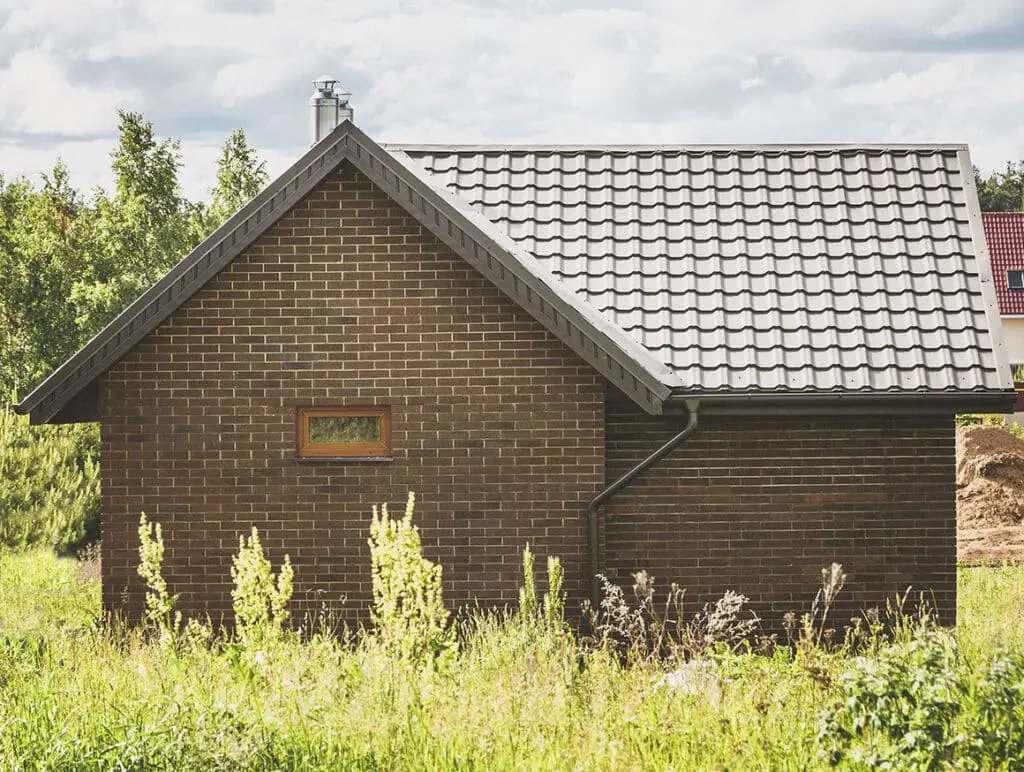
Conclusion
Installing a metal roof on a shed is a practical and cost-effective solution that offers numerous benefits. One of the key advantages of installing a metal roof on a shed is its exceptional durability. This durability ensures that your shed remains well-protected, preventing leaks and potential damage to the contents inside. Additionally, metal roofs are resistant to fire, rot, and insect infestations, further enhancing their longevity and reliability. Another significant benefit of a metal roof is its longevity.
Furthermore, install metal roof on your shed is a relatively straightforward process that can be completed with basic tools and equipment. The step-by-step instructions provided in the guide ensure that even those with limited DIY experience can successfully undertake the installation. By following safety precautions and taking your time to carefully measure and secure each panel, you can achieve a professional-looking result that adds value to your shed.
Installing a metal roof on a shed is a practical and beneficial choice. Its durability, longevity, and low maintenance requirements make it an excellent investment that provides long-term protection and enhances the aesthetic appeal of your shed. By following the provided instructions, you can confidently undertake the installation process and enjoy the advantages of a metal roof for many years to come



